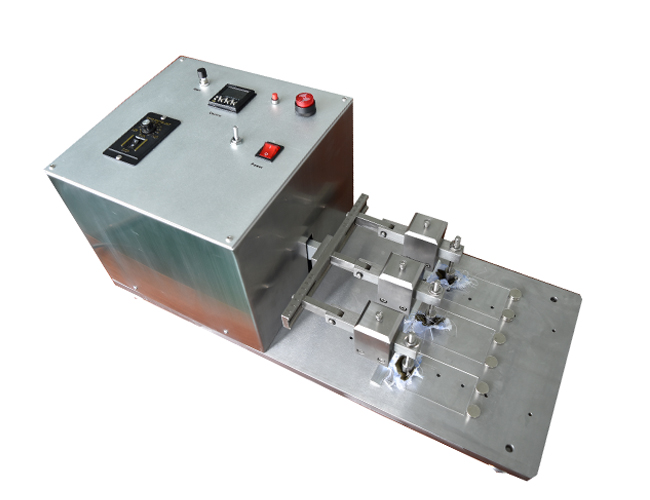Tests the wear resistance of glass surfaces by applying controlled abrasive forces and motion.
WhatsApp : +86 13816217984
Email : info@qinsun-lab.com

ISO 10993-7: Biological Evaluation of Medical Devices – Ethylene Oxide Sterilization Residuals
USP (United States Pharmacopeia): Container Performance Testing
Ph. Eur. (European Pharmacopoeia): Glass Containers for Pharmaceutical Use
JP (Japanese Pharmacopoeia): Glass Container Testing Standards
GB/T 16886.7: Biological Evaluation of Medical Devices – Ethylene Oxide Sterilization Validation
Automotive Glass: Assesses windshield durability against environmental wear.
Consumer Electronics: Tests smartphone screens, tablet covers, and display panels.
Architectural Glass: Validates window and facade materials for long-term performance.
Medical Devices: Ensures compliance with biocompatibility standards (e.g., ISO 10993-7).
Triple-Station Efficiency: Simultaneously tests three samples, reducing total testing time.
Precision Abrasion Control: Adjustable load (up to 10N) and speed (120 RPM) for customized testing.
Uniform Friction: Screw-adjusted friction heads ensure full contact with samples, improving data repeatability.
Automated Operation: PLC-driven reciprocating motion for consistent results.
Real-Time Evaluation: Post-test assessment of scratch depth and surface integrity.
Durable Design: Stainless steel construction withstands high-load testing.
Three Independent Workstations: Enables parallel testing of diverse glass types.
Adjustable Friction Head: 10mm × 10mm steel wool attachment with load regulation (0–10N).
Speed Governor: Controls reciprocating motion (50 ±5 mm stroke) up to 120 RPM.
Safety Interlocks: Prevents accidental start-up and overload damage.
Easy Sample Handling: Quick-release clamps for rapid sample exchange.
Digital Display: Monitors test parameters (load, speed, cycles) in real time.
| Parameter | Specification |
|---|---|
| Control Mode | Automatic (PLC) |
| Maximum Load | 10 N (Adjustable) |
| Speed Range | 0–120 RPM (Reciprocating) |
| Stroke Length | 50 ±5 mm |
| Workstations | 3 (Independent) |
| Friction Head Size | 10 mm × 10 mm (Steel Wool Attachment) |
| Power Supply | AC 220V ±10%, 50Hz |
| Dimensions (L×W×H) | 800 mm × 400 mm × 500 mm |
| Net Weight | 85 kg |
| Display | LED Touchscreen (Load/Speed/Cycle Control) |

YouTube video introduction:https://www.youtube.com/watch?v=1efXDpuY9ZA
Qinsun Instruments Co., LTD is a professional laboratory testing instrument manufacturer in China,Have been focusing on laboratory instrument R&D more than 30 years and have rich industry experience,Based on international testing standards,We are also the instrument supplier for BV SGS laboratory,We provide one-stop solutions for lab instruments,Free Training and Turn-Key Service,Products exported all over the world,Offer 36 month warranty and are a trustworthy partner.
Company Phone
+86-21-6420 0566
Working hours
Monday to Friday
Mobile phone:
13816217984
Email:
info@qinsun-lab.com
